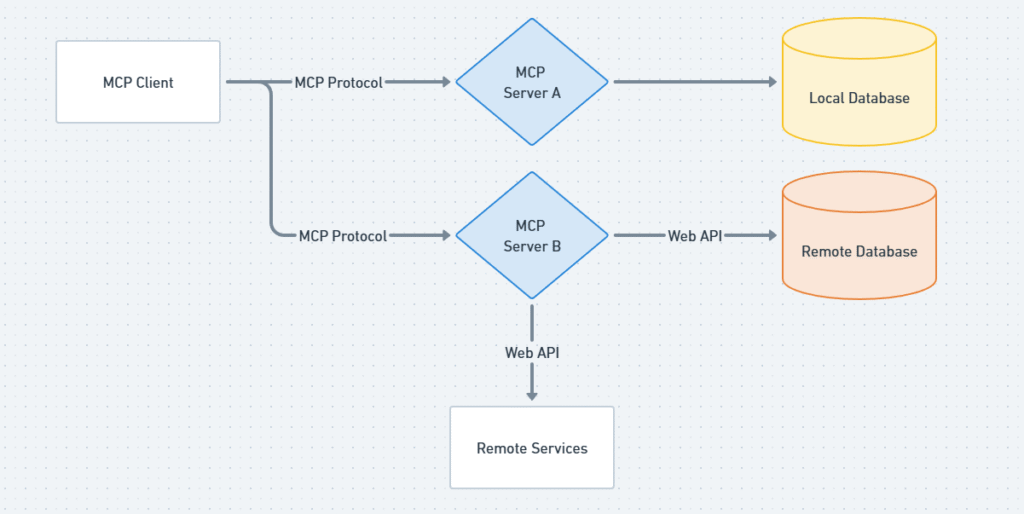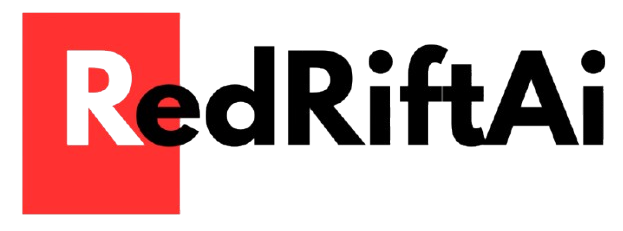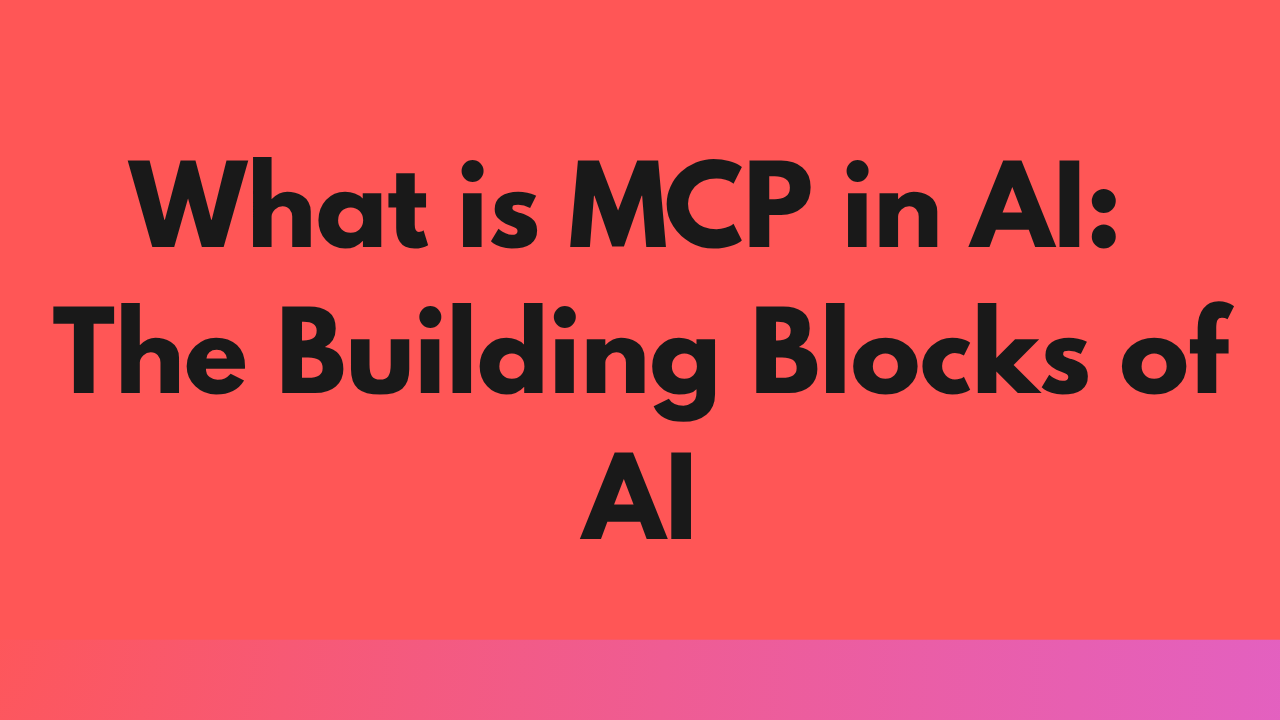When we were kids, we played with building blocks—snap a few pieces together, and suddenly you’ve made a car, a house, or even a tiny robot. MCP works the same way for AI. Instead of physical blocks, it gives language models like GPT, Claude, or Gemini a way to snap together different tools like calculators, file readers, APIs, databases—into something much bigger and smarter. By combining these “blocks,” you can create powerful AI agents that go far beyond just chatting. MCP is the modular connector that brings it all together and no custom wiring needed.
That’s where Model Context Protocol (MCP) comes in.
Think of MCP as the USB‑C port for AI. Just like USB-C lets you plug any device into your laptop, MCP gives AI a universal way to talk to tools, apps, and data—whether it’s a calculator, your local files, or an API on the internet.
And it’s fully open-source, so anyone can build with it.
Table of Contents
What is MCP in AI?
MCP (Model Context Protocol) is a standard way to connect language models (like GPT or Claude) to things like:
- Tools – Small programs that do something, like calculate your BMI or fetch the weather.
- Resources – Information sources, like your local files or a database.
- Prompts – Templates that guide the model on how to use tools or answer things better.
All of this works using a common format (JSON-RPC), so any AI model can use any tool without needing custom glue code every time.
Imagine you’re building a smart assistant. With MCP, instead of hardcoding how it talks to each tool, you just expose them through MCP and the assistant knows what to do.
Why Model Context Protocol (MCP)?
MCP was first released in late 2024 by Anthropic (the creators of Claude). In just a few months, it was picked up by major players like:
- OpenAI
- Google DeepMind
- Microsoft (Windows AI Foundry)
- Replit, Sourcegraph, and others
Why such fast adoption? Because AI tools were getting stuck in silos. Every company had its own plugin system, every model worked a little differently, and developers had to constantly reinvent the wheel. MCP fixes that.
Core Concepts: The Building Blocks of MCP
Let’s break down the three main things that MCP works with: Tools, Resources, and Prompts. These are the “vocabulary” that AI models learn to speak through MCP.
Tools – Things the AI Can Do
Think of tools as buttons the AI can press to get something done.
For example:
- A calculator tool to add numbers.
- A weather tool to fetch the current temperature.
- A search tool to look things up online.
They are real functions—written in code—that the AI can “call” as if it’s asking someone for help.
Resources – Things the AI Can Read
Resources are like books or read-only files the AI can look at but not change.
For example:
- A file reader to look at the contents of a document.
- A database resource to read customer data.
- A greeting resource that returns “Hello, [name]!”
The AI uses resources to gather info and context without doing anything risky or irreversible.
Prompts – Pre-Written Instructions
Prompts are templates that help guide the AI on how to ask questions, use tools, or respond in a certain way.
Think of it as giving the AI a cheat sheet that says:
“Hey, if you want to get someone’s weather, follow this format.”
These are especially useful when combining tools + context to get smarter responses.
How They All Work Together
All this communication between the AI and the tools/resources happens using a standard format called JSON-RPC 2.0. You don’t need to know the details, just think of it like the language they all agree to speak so everything connects smoothly.
Real-Life Example:
Say you tell your AI assistant:
“Tell me today’s weather and also calculate my BMI.”
With MCP:
- The AI uses a weather tool to fetch the temperature.
- Then uses a BMI calculator tool to do the math.
- It might also use a prompt to format the final answer in a friendly way.
Boom — all that just worked together thanks to MCP!
MCP Architecture Overview
At its heart, MCP is all about letting your AI “talk” to the right tools and data safely and simply. Here’s how the pieces fit together:

Figure 1: High‑level view of the MCP architecture. A Host (e.g., your AI app) spins up a Client, which keeps a session open to one or more Servers. Each Server then taps into whatever data or tools it has access to—either on your machine or out on the internet.
- Host
This is your main application (for example, an IDE plugin or a chat interface). It handles user authentication, starts and stops Clients, and makes sure everything stays secure. - Client
Think of this as the “session manager.” It maintains a one‑to‑one link with its Server, negotiating what capabilities are available and passing messages back and forth in plain JSON‑RPC. - Server
Each Server publishes a small set of abilities—Tools (functions you can call), Resources (data you can read), and Prompts (templates to guide the AI). Servers can talk over:- STDIO (standard in/out) for local command‑line tools
- HTTP + SSE (Server‑Sent Events) for web‑friendly streaming
- Other streamable transports that carry JSON‑RPC messages
- Local Data Sources
Anything on your machine: files, local databases, sensors, even custom scripts. Servers can be granted controlled access so your AI can read or write without risk. - Remote Services
Web APIs, cloud databases, external microservices—whatever lives on the internet. Servers act as secure gateways, perfect for calling a weather API or querying a live knowledge base.
Ecosystem & Adoption: Who’s Using MCP and Why It Matters
Model Context Protocol (MCP) may sound technical, but it’s already being used by some of the biggest names in tech—and it’s helping developers build smarter, more useful AI apps faster than ever before.
Official SDKs – Ready-to-Use Building Blocks
You don’t need to start from scratch. The MCP team and open-source contributors have made official SDKs (software toolkits) in most popular programming languages, including:
- Python
- TypeScript / JavaScript
- Java
- C#
- Kotlin
- Go
- Ruby
- Swift (for iOS/macOS)
These SDKs make it super simple to create your own tools, connect to existing services, and let AI models use them in a consistent way—without needing to understand the protocol in depth.
Helpful links:
Who’s Using MCP Already?
This isn’t some future tech—MCP is already live and being used by major companies around the world:
- OpenAI and Anthropic (the creators of GPT and Claude)
- Google DeepMind
- Microsoft (including Windows’ new AI Foundry features)
- Replit and Sourcegraph for coding assistants
- Block (formerly Square) for developer tools
- Shiprocket in India is even using MCP to power AI eCommerce bots
These companies are using MCP to let AI agents work together, access files, call APIs, do calculations, summarize web pages—basically, get real work done like a human assistant.
See more:
- The Verge on Windows + MCP
- Anthropic’s official MCP launch blog
- Shiprocket’s AI eCommerce use case (India)
What You Can Build
Here’s where things get exciting. MCP isn’t just theory—it’s powering real tools that people use:
- Claude Desktop: A version of Claude AI that can safely read your local files, answer questions, or run commands—using MCP to access local data and tools.
- AI2SQL: An AI assistant that converts natural language into working SQL queries, using MCP to tap into databases and schema docs.
- E-Commerce Assistants: Startups like Shiprocket use MCP to let AI handle orders, fetch product data, and interact with customers—fully automated and secure.
- Multi-tool AI agents: Imagine an AI that can Google something, summarize it, do math on it, and then send an email—all through one unified interface. That’s what developers are building with MCP.
More details:
In Simple Words
MCP is like giving your AI a universal remote control—so it can push buttons on all your favorite tools, websites, files, and services, without needing a new setup every time. And because it’s open-source and standardized, it works the same way no matter what language or platform you’re using.
Security & Safety: Keeping Things Safe When Using MCP
Just like giving your AI access to tools and the internet can make it more powerful, it also opens the door to some risks. But don’t worry — there are smart ways to protect yourself and your users.
What Could Go Wrong?
- Prompt Injection: Someone could trick the AI into doing something it shouldn’t by sneaking in bad instructions.
- Malicious Tools: If your server runs a tool from an untrusted source, it could behave in harmful ways (like deleting files or stealing data).
- Credential Leaks: If you’re not careful, your API keys or login info could accidentally get exposed.
These are real concerns — especially if you’re building tools for others to use.
How MCP Helps You Stay Safe
The good news? The MCP community has already built several tools and best practices to help developers avoid these problems:
- MCP Guardian: Think of this like an AI firewall. It monitors what tools are being used, and how, to make sure everything stays in bounds.
- MCP Safety Scanner: Before your server goes live, this tool checks for common issues and bad code patterns.
- Permissions & Consent: You can give users full control over what tools the AI can use and when — just like an app asking for permission to access your camera.
- Activity Logging: Everything that happens can be logged for later review, so if something looks strange, you can figure out exactly what happened.
Advanced Guidance & Tips
- Choosing How Your Server Talks
- STDIO (Local):
Simple and fast for programs running on the same computer. Think of it like talking over the command line—easy to set up and no network needed. - HTTP+SSE (Remote):
Great when your server lives in the cloud or a container. Sends messages over standard web channels and can “stream” updates as they happen. - Streamable HTTP:
A middle ground: uses regular HTTP requests but keeps the connection open so your model can get answers bit by bit.
- STDIO (Local):
- Keeping Everyone on the Same Page
- Always lock your server and client to the same MCP version.
- Before you connect, check what features each side supports. This prevents surprises like “this tool isn’t available” errors.
- Seeing What’s Happening Inside
- Inspector UI: Turn it on to watch your tools and prompts in action, step by step.
- Logs: Save a record of every request and response—handy when something misbehaves.
- Tracing Layers: If you need to dig deeper, enable tracing to see how data flows through each component.
- Find Help and Examples
- GitHub:
- Official MCP repos: explore example servers and community projects under the
modelcontextprotocolorganization. - “Awesome MCP Servers” lists collect real‑world implementations.
- Official MCP repos: explore example servers and community projects under the
- Tutorials & Workshops:
- Look for blog posts or video guides—search for “MCP tutorial” or “MCP workshop” online.
- Community Sites:
- AI.Pydantic (ai.pydantic.dev) hosts bite‑sized overviews.
- The Verge and other tech news sites often cover cool use cases and announcements.
- GitHub:
Future Outlook: What’s Next for MCP?
As the Model Context Protocol keeps evolving, it’s opening doors to exciting possibilities that go way beyond today’s basic tool integrations. Here’s a peek into where MCP is heading—and why it matters to you.
Smarter Websites with Built-In AI Support
Imagine visiting a website, and instead of just reading information, your AI assistant can interact with the site directly—searching, comparing prices, booking appointments—all in the background.
Thanks to MCP, websites can now offer special “agent-friendly” interfaces. It’s kind of like how websites use robots.txt to tell search engines what to look at—only now it’s for AI agents. This means a more connected and intelligent internet, where your assistant can truly do things for you, not just look things up.
Learn more: ai.pydantic.dev | The Verge
One Standard to Rule Them All
Right now, connecting AI tools with apps and services is kind of messy—everyone has their own system. MCP is changing that by becoming the “USB-C” of the AI world. Just like how USB-C made charging and data universal across devices, MCP is doing the same for AI tools, apps, and services.
This means:
- Developers don’t have to write custom code for each new AI model.
- AI apps can plug into anything that supports MCP—just like USB.
- You’ll get smarter, more reliable, and more consistent AI experiences across platforms.
More insights: Business Insider | docs.spring.io | OpenAI Agents + MCP
Real-World Impact: From Healthcare to the Open Web
MCP is already being explored in some powerful new areas:
- Healthcare: With versions like MCP-FHIR (designed for health data), doctors and assistants can access and act on medical info safely and smoothly.
- Enterprise Workflows: Big companies are using MCP to automate routine tasks like checking reports, generating insights, and managing workflows.
- Open Agentic Web: This means a future where AI agents can roam the web, access services, and complete tasks independently—just like a personal AI butler.
So whether you’re building apps, working with AI, or just curious about what’s coming next—MCP is a big piece of the future puzzle.
Conclusion: Why MCP Matters
MCP is changing the game for how AI works with real-world tools and data. Instead of treating language models like clever chatbots stuck in their own bubble, MCP gives them a way to actually do things—like check the weather, read your files, or help you write code.
It’s simple, open, and designed to work out of the box. You don’t need to be a tech wizard to get started. With just a few lines of code, you can connect an AI model to useful tools, safe resources, and smart prompts—without needing to build everything from scratch.
Whether you’re a developer building the next great assistant, a company looking to unlock AI-powered workflows, or just someone who wants smarter help from your favorite model—MCP gives you the bridge to make it happen.
It’s not just about making AI more powerful. It’s about making it useful.
Connect more. Build faster. Stay safe.
That’s what MCP is all about.

